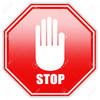CHEMISTRY Flashcards
(44 cards)
What is an oxidation reaction?
When a substance gains oxygen OR When a substance loses electrons
What is a reduction reaction?
OIL RIG
When a substance loses oxygen OR when a substance gains electrons
When metals react with oxygen they always form…
metal oxides!
What is the reactivity series and which four metals come on top?
It explains how reactive metals are - some metals lose electrons quicker than others.
K-Na-Ca-Mg
Describe a replacement reaction
When a more reactive element displaces a less reactive element from a solution of its salt
where is the nucleus?
in the middle of the atom
what does the nucleus contain?
protons and neutrons
what are protons mass and charge?
positive charge / relative mass of 1
what are neutrons mass and charge?
no charge/realtive mass of 1
what are electrons mass and charge?
negative charge/ relative mass of 0
where do the electrons belong?
move along the outside of the nucleus in electron shells.
what appears at the top of the element symbol?
mass number
what appears at the bottom of the element symbol?
atomic number
what is an element?
a substance made up of Atoms that have the same number of protons in their nucleus
what decides an atom’s type?
the number of protons in the nucleus
what are isotopes?
different forms of the same element
what do isotopes include ?
the same atomic number but different mass numbers
what is a compound?
when elements react atoms combine to form compounds
how many substances are in a compound?
two or more elements
name the three main states of matter and the fourth for a bonus!
solid liquid gas plasma (as in the Sun - when atoms meld into each other)
What do the state symbols mean? (s) (l) (g) (aq)
(s) = solid (l) = liquid (g) = gas (aq) = aqueous = disolved in water
Describe the particle theory of matter
The particle theory of matter explains matter as being made up of tiny particles and how they are arranged and move. In solids, particles have a regular arrangement, they’re very close together and vibrate around fixed positions. In liquids, particles have a random arrangement, they’re close together but they flow around each other. In gases, they are arranged randomly, they’re further apart and move quickly in all directions.
HT: What problems are there with the particle theory of matter?
The particle theory does not take into account 1) forces acting between particles 2) the volume of the particles, even though they’re very small 3) the space between particles AND EXTRA IDEA: 4) insights from quantum physics - e.g. action at a distance (paired electrons can change spin at the same time even at great distances)
What is graphene?
A single layer of carbon Atoms are arranged in hexagonal structures just one atom thick It is very strong, has good thermal properties, is an electrical conductor and is nearly transparent.



